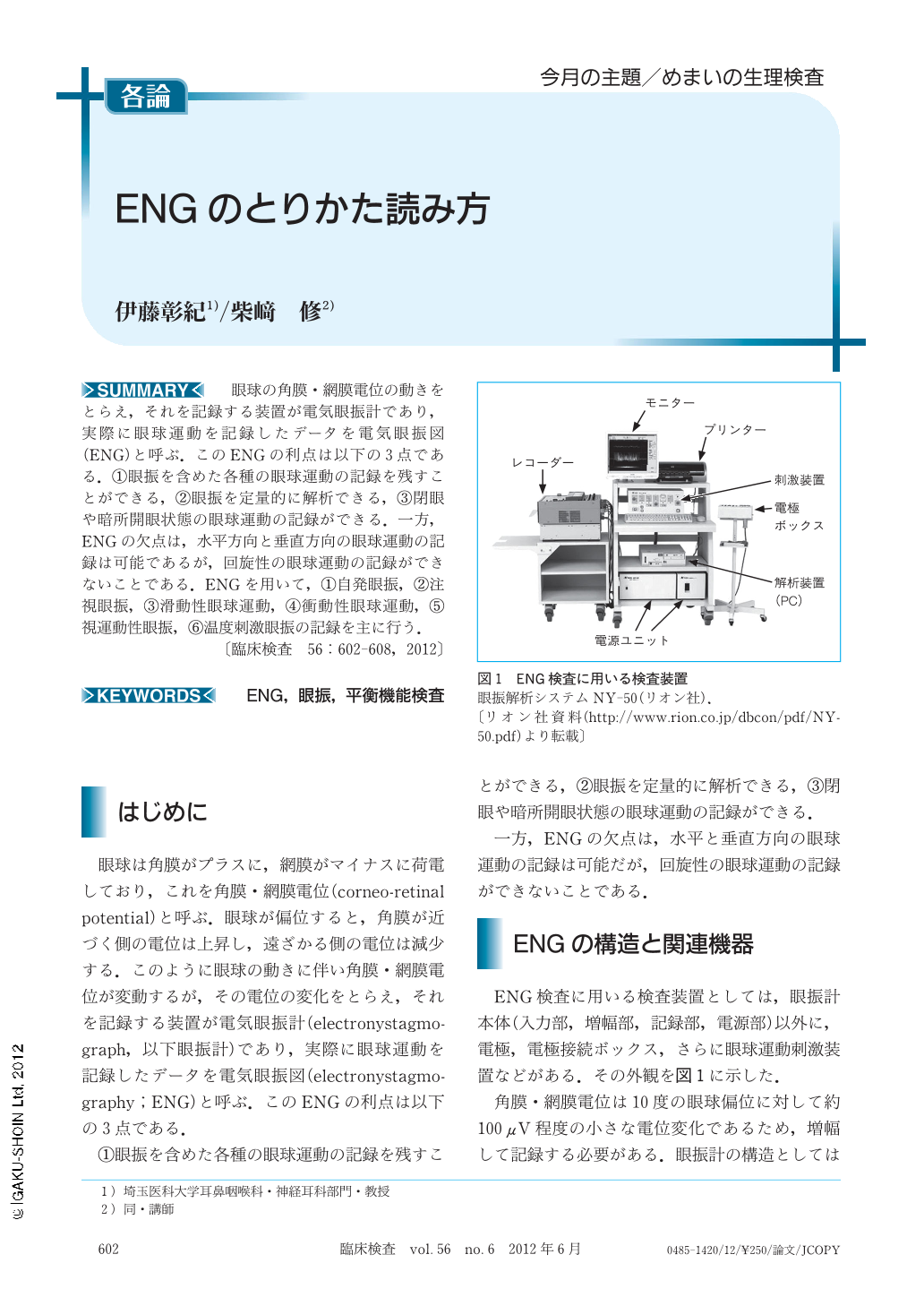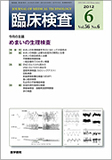Japanese
English
- 有料閲覧
- Abstract 文献概要
- 1ページ目 Look Inside
- 参考文献 Reference
眼球の角膜・網膜電位の動きをとらえ,それを記録する装置が電気眼振計であり,実際に眼球運動を記録したデータを電気眼振図(ENG)と呼ぶ.このENGの利点は以下の3点である.①眼振を含めた各種の眼球運動の記録を残すことができる,②眼振を定量的に解析できる,③閉眼や暗所開眼状態の眼球運動の記録ができる.一方,ENGの欠点は,水平方向と垂直方向の眼球運動の記録は可能であるが,回旋性の眼球運動の記録ができないことである.ENGを用いて,①自発眼振,②注視眼振,③滑動性眼球運動,④衝動性眼球運動,⑤視運動性眼振,⑥温度刺激眼振の記録を主に行う.
Extensive examinations for nystagmus and other ocular movements are important for diagnosing dizziness and equilibrium disorders. Electronystagmographs are devices that can detect and record corneoretinal potentials, and the ocular movement data thus recorded are called ENG (electronystagmograms). ENG offer the following advantages : ①They create a permanent record of all ocular movements, including nystagmus ; ②They enable quantitative analysis of nystagmus ; and, ③They can record ocular movements with the eyes closed or open in a dark environment. A problem with ENG is that while it is possible to record horizontal and vertical ocular movements, rotatory movements cannot be recorded. The following tests are performed during ENG : recording of spontaneous nystagmus ; gaze nystagmus ; pursuit eye movement ; saccade ; optokinetic nystagmus ; and caloric nystagmus.

Copyright © 2012, Igaku-Shoin Ltd. All rights reserved.


